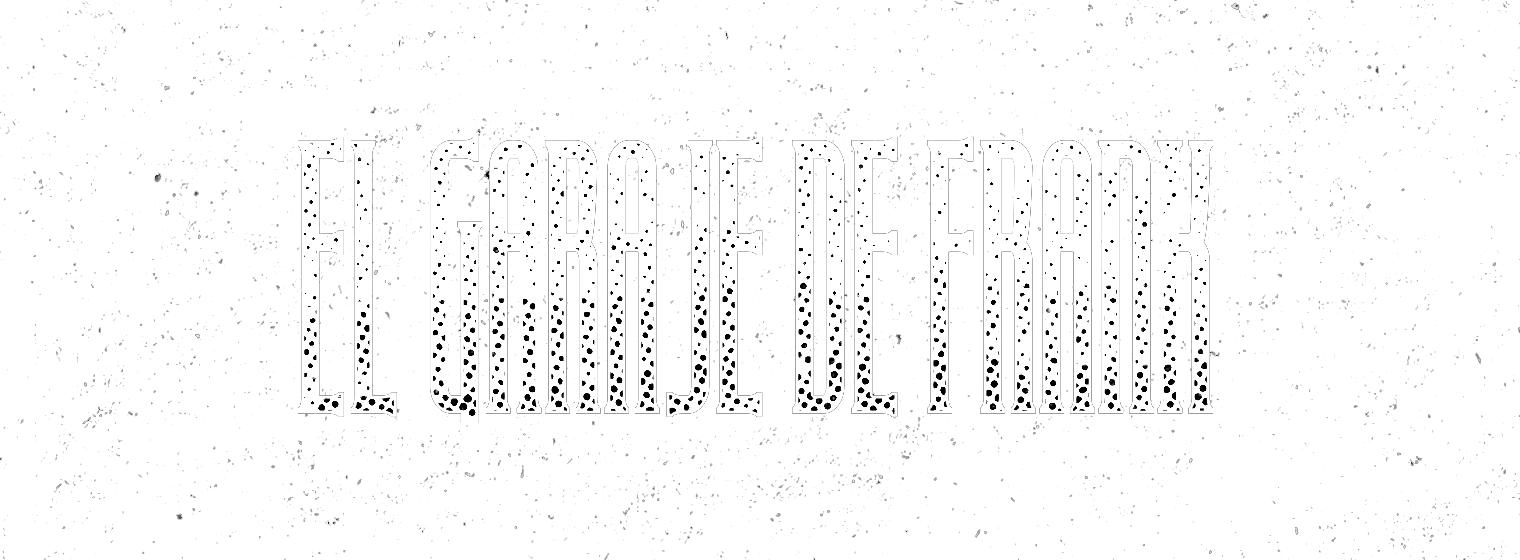The melancholy of Vanishing Dreams, the latest album by French artist Cold Colors, has reached the depths of those of us who write in the Garage. We already knew him from the reference he published in Femur, our friend Arch’s label, we loved his released for Oráculo and now we have fallen in love with this new EP published by Waste Editions. We talked to Frédérick Barbe about his career and what’s next for Cold Colors. His is one of the performances you shouldn’t miss at this year’s Ombra festival to be held in Barcelona from the 6th to the 8th of December.
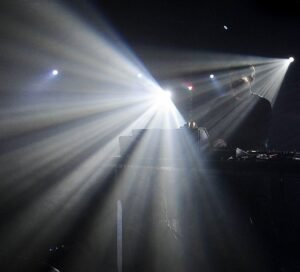 —You were born in the mid-seventies if I am not wrong, so I guess that the music from the eighties had an impact on you, as it can sometimes notice in your compositions. What are your first music memories? How do you think that growing up in that decade have defined the music that you make?
—You were born in the mid-seventies if I am not wrong, so I guess that the music from the eighties had an impact on you, as it can sometimes notice in your compositions. What are your first music memories? How do you think that growing up in that decade have defined the music that you make?
—You’re right, I was born in the 70s, in 1975 to be precise!
There was always music around me, my parents listened to a lot of music, my uncles too, and I think my first memory must be Donna Summer‘s voice on her song “Could It Be Magic”.
After that, I remember always listening to music and always being interested in it. Later came the cassettes recorded in nightclubs that one of my uncles would regularly bring me, where I would hear “Blue Monday” for the first time! Shortly afterwards, we started to hear Italo, electronic pop, Depeche Mode, and The Cure on TV music shows. I totally embraced these new discoveries, and dove right in!
So, yes, the music of the 80s naturally influences my music, because I’ve been immersed in it all my life. The spirit of those years corresponds well to my musical universe, with the drum machines used, the minimalist synthetic sounds, and above all, the melodies and pads, which are often melancholic, nostalgic, and finally quite sad.
—How did you get into electronic music? Any artist that has been a big influence?
—I’ve been listening to Depeche Mode since I’m 12, and I haven’t stopped since; this band has been my gateway to electronic music, but only as a listener. I’ll stay that way until I’m 17…
On a more artistic level, I got into electronic music at a time when I was listening a lot to Aphex Twin and Boards Of Canada. It was then, around 1998, that I began to abandon my guitars in favor of synthesizers and electronic instruments.
—As you said before of your influences is Italo disco, what do you find interesting in this genre and how do you think that it has influenced your music?
—As I was born in the 70s, I was able to take advantage of the mid-80s and the arrival of Italo in France. Unfortunately, we weren’t often treated to the best quality tracks.
It was much later that I was able to discover the references of this musical movement. So, I began to take a more serious interest in it, and soon found myself buying lots of vinyl on Discogs and wherever else I could find it…
What I like the most in this music genre are the drums sounds, and all these big studios had all the best polyphonic synthesizers of that time. So, the synths sounds are also pretty good! We can’t talk about Italo disco without mentioning the beauty of the melodies, nor the extroverted choruses that we love!
Italo disco tracks were very often made by real producers, guys who were engineers and music professionals. They knew how to make these hits, how to record and produce them.
That’s also why it’s been so effective as a musical genre.
As for the influence of this style on my music, I think it lies mainly in the toms rolls, some melodies and, of course, the claps! The Horizon And Beyond is my record where you can feel this influence the most.
—Your first project was Plastic Machine. What can you please tell us of this duo with Guillaume Geay, last year your only album was re-released, right?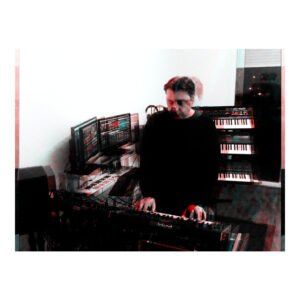
—Yes, Plastic Machine first ep was from 2006. We met with Guillaume a few months before, and as we liked each other work, we decided that we could try to make music together. And it worked like a charm!
Last year, the Italian label Rapid Eye Movement contacted us and asked for releasing our 2006 cd-r on wax. We were more than enthusiastic! And to our great surprise, the record was very popular with the 2023 audience! The 500 copies sold out very quickly!
—A couple of years ago you unveiled an old track from a project called Agent Orange. What can you please tell us about this? Can we expect more tracks from that period?
—Agent Orange is the pseudonym under which I took my first musical steps, more ‘electronic’ than what I did before. I didn’t have much knowledge or equipment, but I was productive!
I’m thinking about releasing a digital EP or mini-LP featuring a few tracks from this period (1999 to 2002).
—When and why did you decide to start Cold Colors?
—When I found out what Agent Orange was all about… I changed my pseudonym on the spot. Cold Colors was born in 2002. Cold Colors is simply a continuation of my earlier work, which I’ve been able to develop and take further musically over time.
—Regrets was your first EP released in 2012. How do you see your first work today? Any regret?
—That it wasn’t released on vinyl!
On this EP, my sound was beginning to evolve, partly thanks to new machines that offered me new sounds. I’m pretty satisfied with these tracks, ‘Regrets’ and ‘Eleven’ became ‘classics’ of my repertoire.
On the mixing side, however, I couldn’t have done much better… I was a total beginner, and you can hear it! Even so, this album contains some tracks that are still being played today; for example, 2012’s ‘Regrets’ played by Marco Shuttle in 2024! Surprised and delighted that some tracks ‘live’ for so long!
—Your following EP was recorded with the collaboration of Estonian singer Xiu. You met her through the internet and asked her for a collaboration. What did you find interesting in her voice?
—Yes, I’ve met Xiu online… But I encountered her voice on the great track ‘Tishina’ she did with Newclear Waves.
A mutual friend told me that she liked my track ‘L’amour sans toi’, and, as I wanted to ask Xiu for a track, I’ve registered on Facebook and looked for my new friend!
We were supposed to make only one track together, but when I heard the first seconds of this track (it was ‘Loneliness’ I think) I directly asked Oksana for an EP, and she said yes! Six tracks were then made (just four have been released, for now).
Her voice, her words, everything worked so well with my music. Working with such a beautiful voice was really challenging, I had to review my way of working, of composing; it’s been a great experience!
The reasons for my interest in Oksana’s voice are quite evident; she possesses one of the most exquisite voices I have encountered in this genre of music. In addition to her vocal talent, Oksana has composed beautiful lyrics that align perfectly with our current emotional states.
I think I’ve released some of my best tracks here, and really love what we made together. Thanks again Oksana!
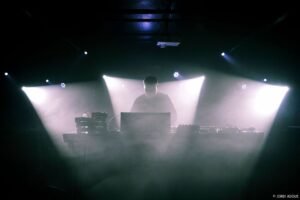 —Lux Rec released your EP Dans le Vide in 2014, where we can already find the melancholy that characterizes your music. Do you consider yourself a melancholic person? Do you need to be in a special mood to compose your music?
—Lux Rec released your EP Dans le Vide in 2014, where we can already find the melancholy that characterizes your music. Do you consider yourself a melancholic person? Do you need to be in a special mood to compose your music?
—Indeed, I think melancholy and nostalgia are part of my dna. I’ve always had what I could call a light spleen, surely inherent to my personality. No need to be in any particular frame of mind, other than to want to play and create music.
Releasing this first vinyl on a label like Lux Rec was a little personal pride as I’d been listening to the label’s releases for months, with some very interesting artists, such as Echo 106, CCO and Alessandro Parisi. I must have been speechless when I read the e-mail in which Daniele Cosmo (cofounder of the label) contacted me about releasing a record on his label.
I think we made a great record together!
—Cold wave and new wave are some of your influences and you have recorded numerous sessions with your preferences. Do you think that we are living in a really good time for these genres? As you haven’t released any of your selections lately, what are you listening to at the time?
—Yes, I think that these styles of music have found a certain public, and new artists to illustrate them, not copies, but groups, musical projects that have been able to digest several influences of the ’80s type and that don’t necessarily plunge us into stereotypes, and if they come to use old recipes, we know that’s also a little why we listen to them!
Yes, it’s been a long time since I recorded a session. Mainly because I don’t necessarily have much time for music anymore, so I prefer to devote it to producing tracks, or simply playing in my home studio.
In recent years, I’ve mainly listened to minimal wave, synth-pop, shoegaze, post-punk and various other musical styles, but not with the same regularity.
In the absence of a track selection, here are a few of the artists and bands I’ve been listening to over the past few months: Magic Wands, Desmond Doom, The Soft Moon, Ssleeping Desiress, Blonde Redhead, Closed Mouth, Seasurfer, Figure Study, Selofan, Soft Cell, Scratch Massive, and, predictably, The Cure.
 —In The Horizon and Beyond, you made six tracks that worked perfectly as a unit. Did you work in a different way, more thinking in a general sound than in different songs?
—In The Horizon and Beyond, you made six tracks that worked perfectly as a unit. Did you work in a different way, more thinking in a general sound than in different songs?
—That’s right, this record was made a little more quickly than usual, I must have been in an ‘inspired’ period. So the tracks were produced in a few months, and not over some years: the instruments are the same all over the record, that must helps the sound to be more homogeneous…
But above all, this record was originally intended for a label other than Nocta Numerica. I had therefore decided that it would incorporate a little more of the Italo influences from the records I was listening to at the time, to ‘stick’ a little more to my spirit of the moment, also to fit better with the label’s spirit.
The release on Nocta Numerica was just as welcome, as I knew well Charles, the label’s founder. It was natural to propose my EP to Charles for his young label. The Horizon and Beyond was then the second release on the label (which has a very fine discography today!).
This record benefited from top-quality mastering by Marco Spaventi (who had already mixed and mastered my previous EP Dans le vide).
— That was your first fully instrumental album. Why do you decide to make Cold Colors a project without voices?
—Most of my songs are instrumental, and the ones where I’ve used my voice are much rarer. Cold Colors is essentially instrumental, definitely. But, having recently acquired a new vocoder, it’s not impossible that my ‘voice’ will return, but it will always be sparingly.
—You played in Madrid in one of Femur’s party in 2015. We are also good friends of Aitor (Arch) and Specka is one of our favourite places to go out. How do you remember that night?
—I’ve known Aitor on Facebook, back in 2013 or 2014, I think. We had quite a few Spanish “friends” in common on this network, and it was a nice surprise when Aitor invited me to play in Madrid, at Specka. Surprised and honoured, because Aitor provided a top-notch lineup at his parties.
I came to play in Madrid, on the night of my 40th birthday, and there was no better way to celebrate! Thanks again to Aitor and his Madrid friends! I’ve had a great time, with very good memories of it!
—You have published your music in Oráculo, Femur and now Waste Editions, three Spanish labels. Do you think that your music is better appreciate here?
—As I don’t really look at stats and all these things, I don’t really know what to answer. But still, Spain is the country where I have played the most. I have always had a very good reception from the public during my visits to Barcelona and Madrid.
The three labels you mention are used to releasing very good records, so I am all the more delighted to know that they trust me and believe in my music. The fact that each of them is committed to ensuring that the sound of the record and the final object are of quality is also particularly important, even reassuring because I know that music will be well “treated” with such enthusiasts.
T.H.A.N.K.S. GUYS!
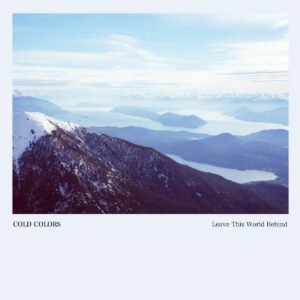 —Leave This World Behind, contains songs with names such as “Echoes From the Past” and “Memories”. And even “Summer Nights” has a nostalgic feeling. Would you say that the past is one of the main sources of inspiration for your work?
—Leave This World Behind, contains songs with names such as “Echoes From the Past” and “Memories”. And even “Summer Nights” has a nostalgic feeling. Would you say that the past is one of the main sources of inspiration for your work?
—There are events, tragic or otherwise, that we encounter during our lives, and some, more than others, will surely always resonate in us.
The past is an unconscious source of inspiration, I think, in the sense that what still resonates in me has changed the way I see things, and that inevitably influences the way I compose, the mood of the tracks.
—I read that you prefer analogue gear, why? What gear are you using at the moment?
—The sound and the interface! These are the two main reasons why I use analog machines.
But not just any machines, I’m a big fan of the old Roland synthesizers. After owning many vintage synths, I’ve only kept 3: the Juno-60, the Juno-106 and the JX-8P. These three are virtually indispensable to me.
In my music, you can find vintage synths, old and new analogs, some digital instruments, and some samples too. As for drum machines, I use mainly Elektron Analog Rytm and Akai MPC Live. Other machines or synths can be used for the rhythmic section. And finally, I use the computer to apply real-time effects on my synths, and to record on Cubase all my external tracks.
—Back with Femur, you released La part de ’Ombra, an EP with some tracks that appeared on Early Demos, one from Regrets EP and one from a single from 2015. Although the tracks are from different years, the album manages to have some consistency. What did you find in common in all these tracks?
—We chose these tracks together, with Aitor. If I remember correctly, Aitor wanted to release “After Dark”, then we had a few ideas about the other tracks… “Memories On a Screen” and “Mon âme perdue” both date from the end of 2006, and as for “Eleven”, Aitor wanted to release the version I’d redone for the live shows, but in the end we released the original version because that’s the one listeners like, and it had never been released on vinyl. These 3 tracks are directly connected, “whereas” After Dark goes for something quite different, but it’s still Cold Colors!
—”After Dark” was your most disturbing track (and dark, of course) till date. Have you thought as making more songs in this line?
—I don’t know if it’s disturbing, I don’t feel that way… But, no, I don’t think I’ll be going back to that type of sound for the time being. I’m thinking more of introducing bass and guitars on some of the next tracks.
—So far you have done only one remix: Holygram’s “Acceleration”. How was the experience? Would you like to do more?
—Yes, just one. I knew Holygram’s debut album and really liked their music. I also knew the singer, Patrick, as we are both signed on Oráculo Records. Making a remix for the band was quite natural as I loved the track, and working with their voice and guitars was pretty cool!
As nice as this experience was, I am not chasing remixes. I am not closed to the idea, but I really need to like the song and have the time to dedicate to it.
—You did not release material as Cold Colors from 2017 to this 2024. Can you tell us why?
—Leave This World Behind was released in 2017, there was also the remix for Holygram that year.
In 2020, La Part de L’ombre was released on Femur. But effectively no new tracks here.
Also, in 2020, I was working on what would later be Vanishing Dreams.
So yes, I’ve perhaps slowed down the release pace a bit, partly because of my daily job, also, there are times when you feel the inspiration is not there, and you can spend hours playing without anything concrete coming out.
And I also come from an era when artists released an album every year, every two years, every ten years if necessary… unlike today, when albums are no longer of interest to listeners, and musicians release a new track every two days; I’m not part of that world.
—Vanishing Dreams is your last EP, released this year and, in my opinion, one of the best so far. What can you please tell us of the composition of this work?
—Thank you very much! The record has been very well received and I’m very happy with it.
It was ready for a very long time, but pressing difficulties meant that the record took more than a year to be released. The tracks were created between 2019 and 2022. The basic premise was to move away from my Italo disco influences, and that the record would feature slower tracks than on previous ones.
“Clear Memory” was the first track I chose for the record. It served as an intro track and helped set the tone for the tracks that followed.
I didn’t take any particular approach to the composition of this record. As usual, there were quite a few aborted and discarded tracks, as well as others that worked quite well.
When I had enough coherent tracks together, and the recording and mixing could be done, I was finally able to send a mini-LP to Carlos (cofounder of Waste Editions).
The label then took over mastering and graphic composition.
And finally, a beautiful object has been released in January 2024!
—What are your plans for the future?
—I’m starting to work on ideas for my next album. It’s bound to be an album – my first! After so many years of releasing EPs and mini-LPs, I need to take the time to settle down on a long format.
Before releasing a LP or an EP, a 7” should be out in the next months, on an English label this time. Two tracks that never got released on wax.
—What can we expect of your live at Ombra? Sadly, you could not play on the 2022 edition.
—I’m also in the process of putting the set together… I’m planning to play tracks from each EP, with some “flagship” tracks like “L’amour sans toi” and “Eleven”, as well as more recent ones that I haven’t played much. I’ve also added an old song to the tracklist that I’ve never played live.
It’s true that I wasn’t able to play in 2022, as circumstances made it impossible for me to get to Barcelona. But this year, I will be there!
So, see you soon at Ombra!
